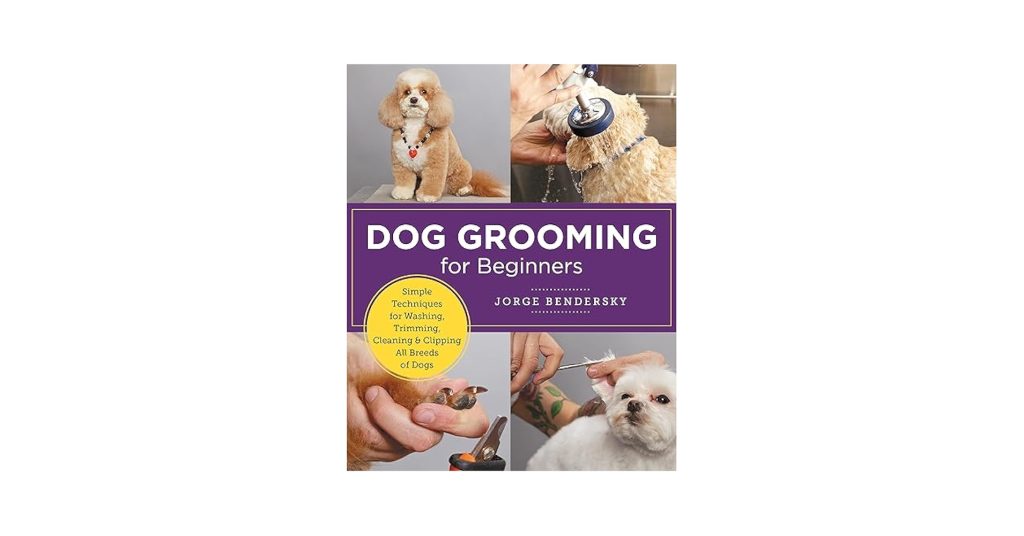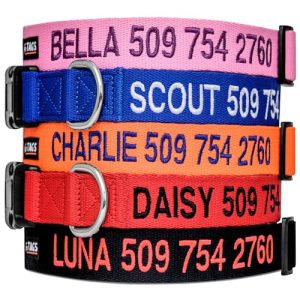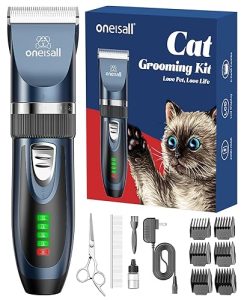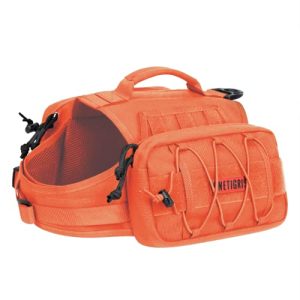Have you ever looked at your furry friend and thought, “I wish I could groom you myself”? Dog grooming is more than just keeping your pet looking adorable; it’s essential for their health and happiness.
Imagine saving money on grooming services while ensuring your dog receives the personalized care they deserve. Learning how to groom your dog can be a rewarding experience for both you and your pet, strengthening your bond like never before. In this guide, you’ll discover simple, effective techniques to transform grooming from a daunting task to a joyous routine.
Ready to master the art of dog grooming and see your pooch wagging their tail with delight? Let’s dive in and unleash your inner groomer!

Credit: www.petsuitesofamerica.com
Choosing The Right Grooming Tools
Grooming your dog is easier with the right tools. Picking good equipment helps keep your pet clean and healthy.
Learn about the tools you need before you start. This guide covers brushes, combs, clippers, and scissors.
Essential Grooming Equipment
Some basic tools make grooming simpler and safer. Every dog needs a few key items to stay neat.
- A slicker brush to remove loose fur and dirt
- A metal comb for untangling mats
- Dog-friendly shampoo and conditioner
- Nail clippers designed for dogs
- A grooming table or non-slip mat
Selecting Brushes And Combs
Brushes and combs suit different fur types. Choose tools based on your dog’s coat length and texture.
| Brush Type | Best For | Purpose |
| Slicker Brush | Medium to long coats | Remove tangles and loose hair |
| Bristle Brush | Short coats | Clean and shine fur |
| Pin Brush | Curly or wiry coats | Detangle and smooth hair |
| Metal Comb | All coat types | Remove mats and check for debris |
Clippers And Scissors Guide
Clippers and scissors trim hair safely. Use the right blade and blade length for your dog’s breed.
- Choose clippers with quiet motors to reduce noise
- Use different blade sizes for coat thickness
- Scissors should be sharp and comfortable to hold
- Rounded-tip scissors are safer for trimming near skin
- Keep tools clean and oiled for best results
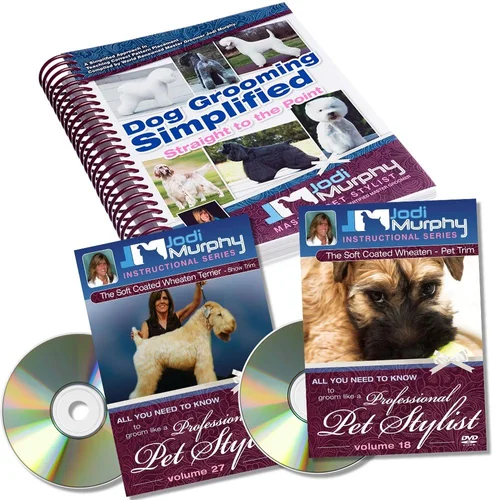
Credit: www.jodimurphy.net
Preparing Your Dog For Grooming
Getting your dog ready for grooming helps make the process smooth. A calm dog is easier to work with and less stressed.
Preparing your dog takes time and patience. Start early to build trust and comfort.
Creating A Calm Environment
Choose a quiet, comfortable space for grooming. Avoid loud noises and distractions that upset your dog.
Use soft lighting and keep the room warm. A calm place helps your dog relax during grooming.
Introducing Tools Gradually
Show your dog grooming tools before using them. Let your dog sniff and explore each item calmly.
- Start with a brush or comb
- Use clippers and scissors slowly
- Offer treats when your dog stays calm
Introducing tools slowly helps your dog feel safe and less scared.
Handling Anxious Dogs
Watch your dog’s body language. Signs like shaking or hiding show anxiety.
Speak in a soft voice and use gentle touch. Take breaks if your dog becomes too nervous.
- Give treats and praise often
- Use a calm and steady approach
- Try short grooming sessions first
Basic Grooming Techniques
Grooming dogs keeps them healthy and happy. Regular care helps avoid skin and coat problems. Learning simple grooming skills saves trips to the vet.
Start with easy techniques. This guide covers brushing, bathing, drying, and nail trimming. These basics fit most dog breeds and sizes.
Brushing And Detangling
Brushing removes dirt and loose hair. It also stops mats and tangles from forming. Use the right brush for your dog's coat type.
- Choose a slicker brush for long-haired dogs
- Use a bristle brush for short-haired dogs
- Brush gently to avoid hurting the skin
- Work in sections to cover the whole body
- Use a comb to detangle stubborn mats
Bathing And Drying
Bathing cleans your dog’s coat and skin. Use lukewarm water and dog-friendly shampoo. Avoid getting water in the ears and eyes.
| Bathing Step | Tip |
| Wet the coat | Use warm water, not hot or cold |
| Apply shampoo | Massage gently, avoid eyes and ears |
| Rinse thoroughly | Remove all soap to prevent irritation |
| Dry the dog | Use a towel first, then a hairdryer on low |
Nail Trimming Tips
Trim nails to keep paws healthy. Long nails cause pain and walking problems. Use sharp nail clippers made for dogs.
Follow these tips for safe nail trimming:
- Hold the paw firmly but gently
- Cut a small part of the nail at a time
- Avoid the quick, the pink area inside the nail
- If you cut the quick, stop bleeding with styptic powder
- Reward your dog with treats for calm behavior

Credit: www.youtube.com
Advanced Grooming Skills
Learning advanced grooming skills helps keep dogs healthy and looking good. These skills include handling different coat types, cleaning ears, and caring for teeth.
Each dog needs special care depending on its breed and condition. Understanding these skills makes grooming easier and safer.
Styling Different Coat Types
Dogs have many coat types like short, long, curly, or wiry. Each coat needs a different approach to keep it neat.
- Short coats:Use a firm brush to remove loose hair and dirt.
- Long coats:Comb gently to avoid tangles and mats.
- Curly coats:Use a slicker brush to keep curls soft and clean.
- Wiry coats:Hand-strip dead hair for best texture and shine.
Ear Cleaning Procedures
Cleaning a dog’s ears prevents infections and discomfort. Use gentle methods and the right tools for safety.
- Check ears for redness or bad smell before cleaning.
- Use a vet-approved ear cleaner and cotton balls.
- Apply cleaner gently inside the ear canal without pushing too deep.
- Wipe away dirt and excess fluid carefully.
- Dry the ears with a soft cloth to avoid moisture buildup.
Teeth Care Essentials
Good dental care keeps dogs healthy and prevents bad breath. Brush their teeth regularly and watch for signs of problems.
| Tool | Purpose | Frequency |
| Dog toothbrush | Remove plaque and food debris | Daily or several times a week |
| Dog toothpaste | Clean teeth safely with dog-safe flavors | Every brushing session |
| Dental chews | Reduce tartar and freshen breath | Several times a week |
| Water additives | Help reduce bacteria in the mouth | Daily |
Common Grooming Mistakes To Avoid
Grooming your dog is important for their health and happiness. Many dog owners make mistakes that can harm their pets. Learning what to avoid helps keep dogs safe and comfortable.
This guide covers three common grooming errors. Each section explains what to watch for and how to prevent problems during grooming sessions.
Over-grooming Risks
Grooming too often or too harshly can hurt your dog’s skin and coat. Over-grooming removes natural oils that protect the fur and skin. This can cause dryness, irritation, and infections.
- Brushing too hard or too often
- Bathing more than once a week
- Using strong shampoos daily
- Trimming fur too short frequently
Improper Tool Use
Using the wrong tools or using tools incorrectly can hurt your dog. Sharp scissors or clippers can cut the skin. Old or dirty brushes can cause pain or infection.
| Tool | Common Mistake | How to Use Properly |
| Scissors | Cutting too close to skin | Keep a safe distance, use rounded tips |
| Brush | Pulling matted fur harshly | Gently detangle in small sections |
| Clippers | Using dull blades | Sharpen or replace blades regularly |
| Shampoo | Using human shampoo | Choose dog-specific shampoos |
Ignoring Dog’s Comfort
Grooming can be stressful if you ignore your dog’s feelings. Dogs may become scared or anxious. This makes grooming harder and may cause injury.
Tips to keep your dog comfortable during grooming:
- Speak softly and calmly
- Take breaks if the dog seems stressed
- Offer treats to reward good behavior
- Use gentle motions and slow movements
- Watch for signs of discomfort or pain
Building A Grooming Routine
Grooming your dog regularly keeps them healthy and happy. A good routine helps prevent matting and skin problems.
Creating a grooming schedule fits your dog’s needs and your time. It makes grooming easier and less stressful.
Scheduling Sessions
Set regular times for grooming to build a habit. Choose days when you have enough time and your dog feels calm.
Short sessions are better at first. Increase time as your dog gets used to grooming.
- Pick a quiet, comfortable place
- Use the same day each week or month
- Keep sessions short and positive
- Include brushing, nail trimming, and bathing
Tracking Your Dog’s Grooming Needs
Every dog has different grooming needs. Track your dog’s coat, nails, and skin condition to know when to groom.
Use a journal or app to note what you did and when. This helps spot changes and plan the next session.
- Note coat condition and length
- Record nail length and trimming dates
- Watch for skin irritation or dirt
- Mark bath days and products used
Adjusting For Seasonal Changes
Seasons affect your dog’s coat and skin. Adjust grooming frequency and care for summer and winter needs.
Increase brushing in spring and fall to handle shedding. Use moisturizing products in dry winter months.
- Brush more during shedding seasons
- Trim coat shorter in hot months
- Check paws for salt or ice in winter
- Use gentle shampoos to protect skin
When To Seek Professional Help
Learning to groom your dog is helpful. Some grooming tasks are easy to do at home. But some needs require a professional groomer’s skills.
Knowing when to get help can keep your dog safe and healthy. It also makes grooming less stressful for both of you.
Recognizing Complex Grooming Needs
Some dogs have special grooming needs that are hard to manage at home. Dogs with thick mats, skin problems, or special coat types may need a pro.
If your dog gets nervous or aggressive during grooming, it is safer to ask a professional for help. They know how to handle pets gently and correctly.
Finding A Reliable Groomer
Look for groomers with good reviews and proper training. A reliable groomer will treat your dog with care and skill.
Visit the grooming place first. Make sure it is clean and the staff is friendly. Ask about their experience with your dog’s breed.
- Check online ratings and reviews
- Ask friends or your vet for recommendations
- Visit the grooming salon before booking
- Ask about safety and health practices
Cost Considerations
Professional grooming can cost more than grooming at home. Prices depend on the dog’s size, coat type, and services needed.
Compare prices from different groomers. Remember that quality care is important. Sometimes paying more means better results and safety.
- Small dogs usually cost less to groom
- Extra services like nail trimming add to the price
- Regular grooming can lower long-term costs
- Ask for a price list before booking
Frequently Asked Questions
What Basic Tools Do I Need To Groom Dogs At Home?
You need a slicker brush, comb, nail clippers, dog shampoo, and grooming scissors. These tools cover brushing, bathing, and trimming needs effectively.
How Often Should I Groom My Dog?
Most dogs benefit from grooming every 4 to 6 weeks. Frequency depends on breed, coat type, and activity level.
Can I Learn Dog Grooming Without Professional Training?
Yes, you can start with online tutorials and practice. However, professional courses help improve skills and safety knowledge.
What Are Common Grooming Mistakes To Avoid?
Avoid cutting nails too short, using human shampoo, and brushing aggressively. These mistakes can harm your dog’s skin and comfort.
Conclusion
Grooming dogs helps keep them healthy and happy. Regular care stops skin problems and mats. Learning step-by-step makes the process easier. Practice patience and use gentle tools. Watch how your dog reacts and adjust. Soon, grooming becomes a bonding time.
Everyone can learn with a little effort. Start today and enjoy a cleaner, happier dog.

Emily Barker is the founder of ChillDogLife.com, a space dedicated to helping pup parents discover the best dog products, lifestyle tips, and cozy ideas for happier homes.
A lifelong dog lover, Emily combines her passion for pets with a knack for research to share trusted recommendations on everything from toys and furniture to health and everyday care.
Her goal is simple: to make life easier, stylish, and more joyful for dogs and the people who love them.
